February 23, 1917: February Revolution Challenges the Monarchy
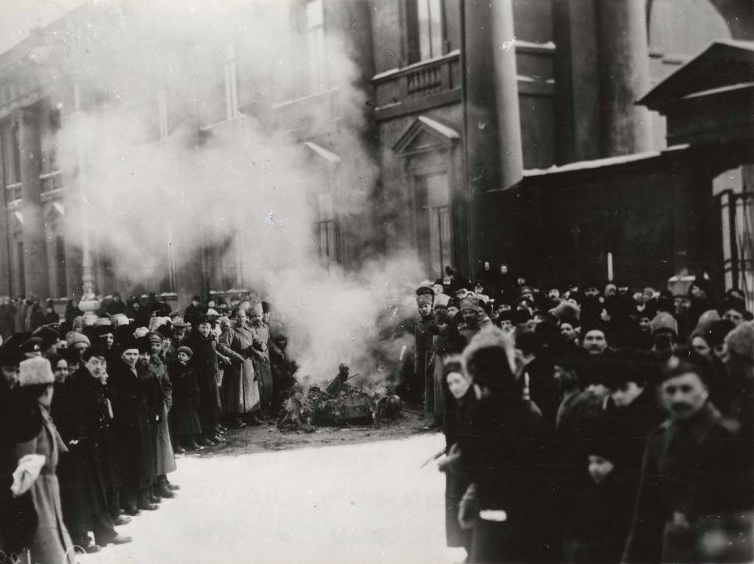
People burn tsarist coats of arms on Nevsky Prospekt near Anichkov Bridge in Petrograd on February 27, 1917.
Source: Multimedia Art Museum, Moscow
On February 23, working-class women took to the streets of Petrograd (now St. Petersburg) to protest food shortages and high bread prices. Over the next few days, the protests swelled as people joined the women, eventually bringing the city to a standstill. Four days later, parts of the military joined the side of the protestors and began arresting members of Tsar Nicholas II’s government.
March 2, 1917: Nicholas II Abdicates, Provisional Government Established
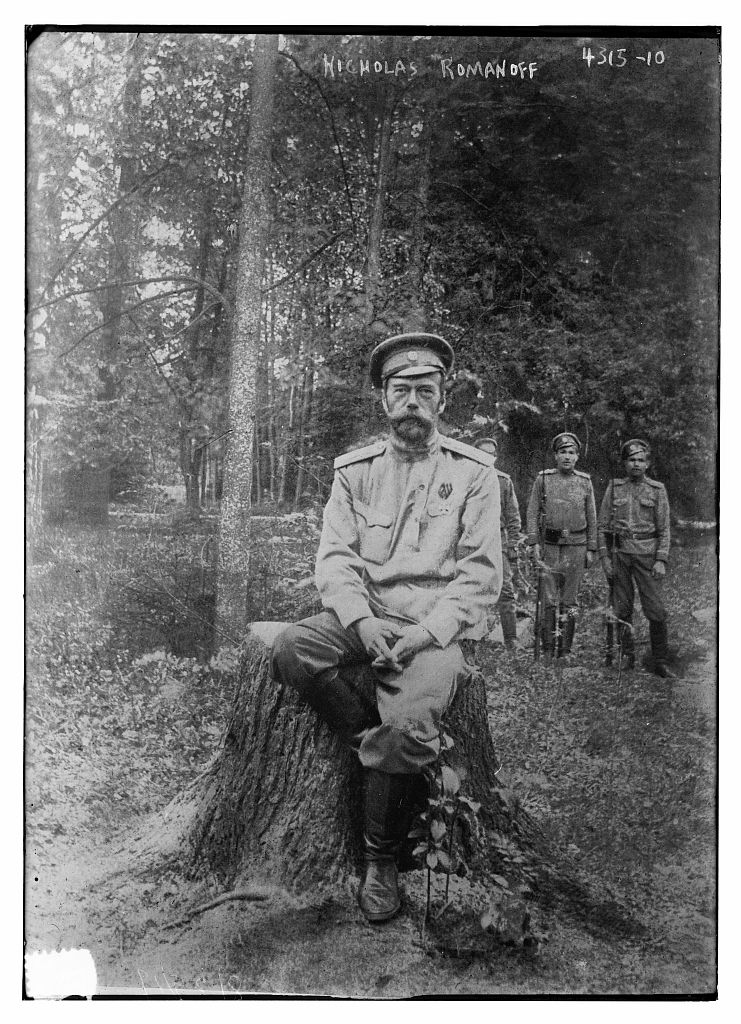
Tsar Nicholas II at Tsarkoye Selo after his abdication in 1917.
Source: Library of Congress
One week after the protests erupted in Petrograd, members of the military persuaded Tsar Nicholas II to abdicate the throne. After he stepped down, moderate politicians created a transitional government that would lead Russia until a formal election could be held. At the same time, a series of city councils made up of workers and soldiers, called “Soviets” were formed to represent the working class. Over the next few months, the transitional government proved to be both unpopular and ineffective, growing the influence of the Soviets.
April 16, 1917: Lenin Returns from Exile
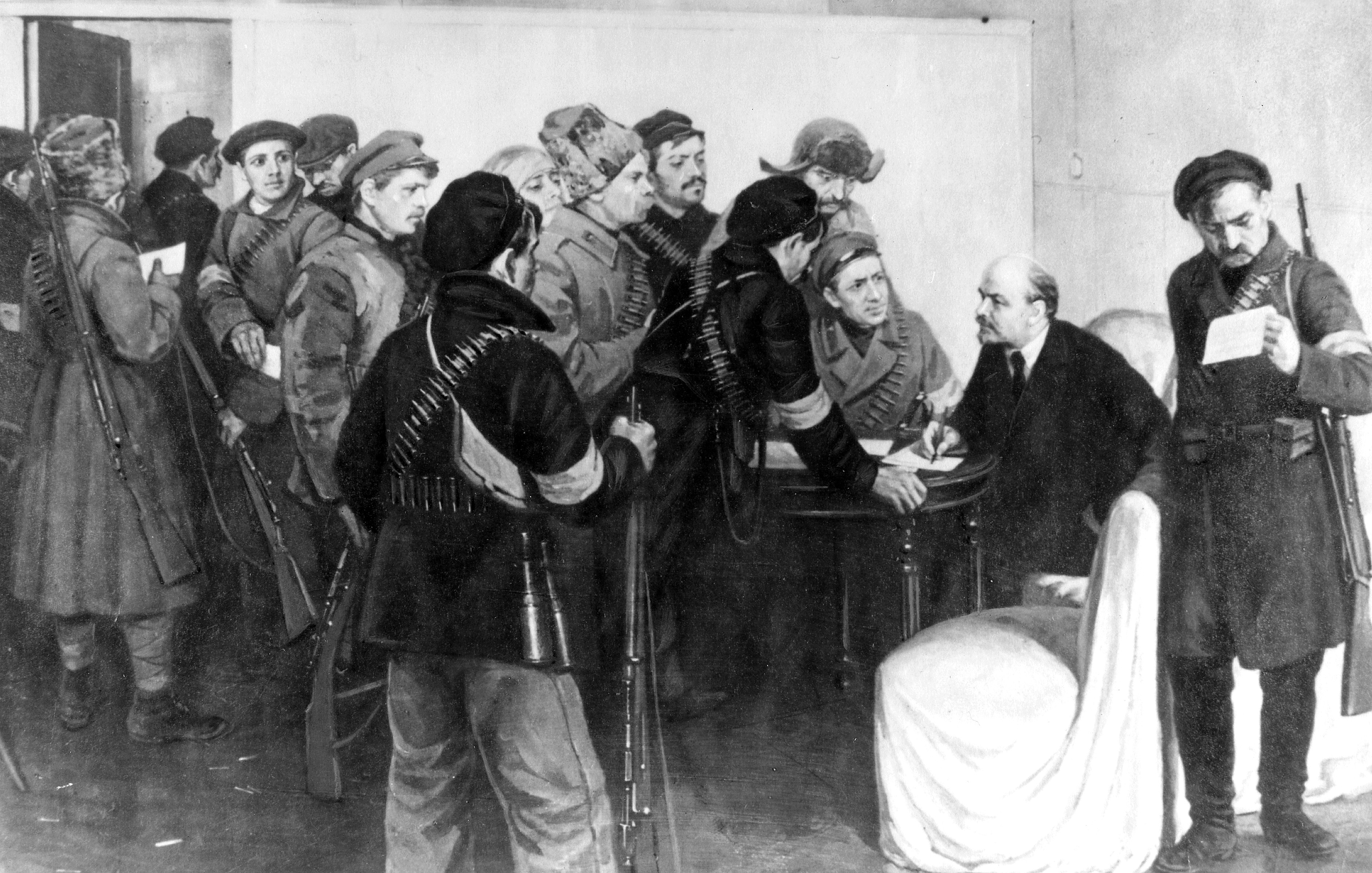
A depiction of Lenin registering volunteer armed revolutionaries in the Smolny Institute, the headquarters of the Revolutionary Military Committee, in 1917.
Source: Ullstein Bild via Getty Images
Two months after the February Revolution, Lenin returned to Russia from exile. His return was facilitated by German authorities, who hoped his anti-war views would help undermine Russia’s role in World War I and secure a victory for Germany. Upon his arrival, Lenin gave a speech from the train station against the “promises” of the transitional government, which ended in a call for a “world-wide social revolution.”
August 22-27, 1917: First Attempted Coup of Provisional Government
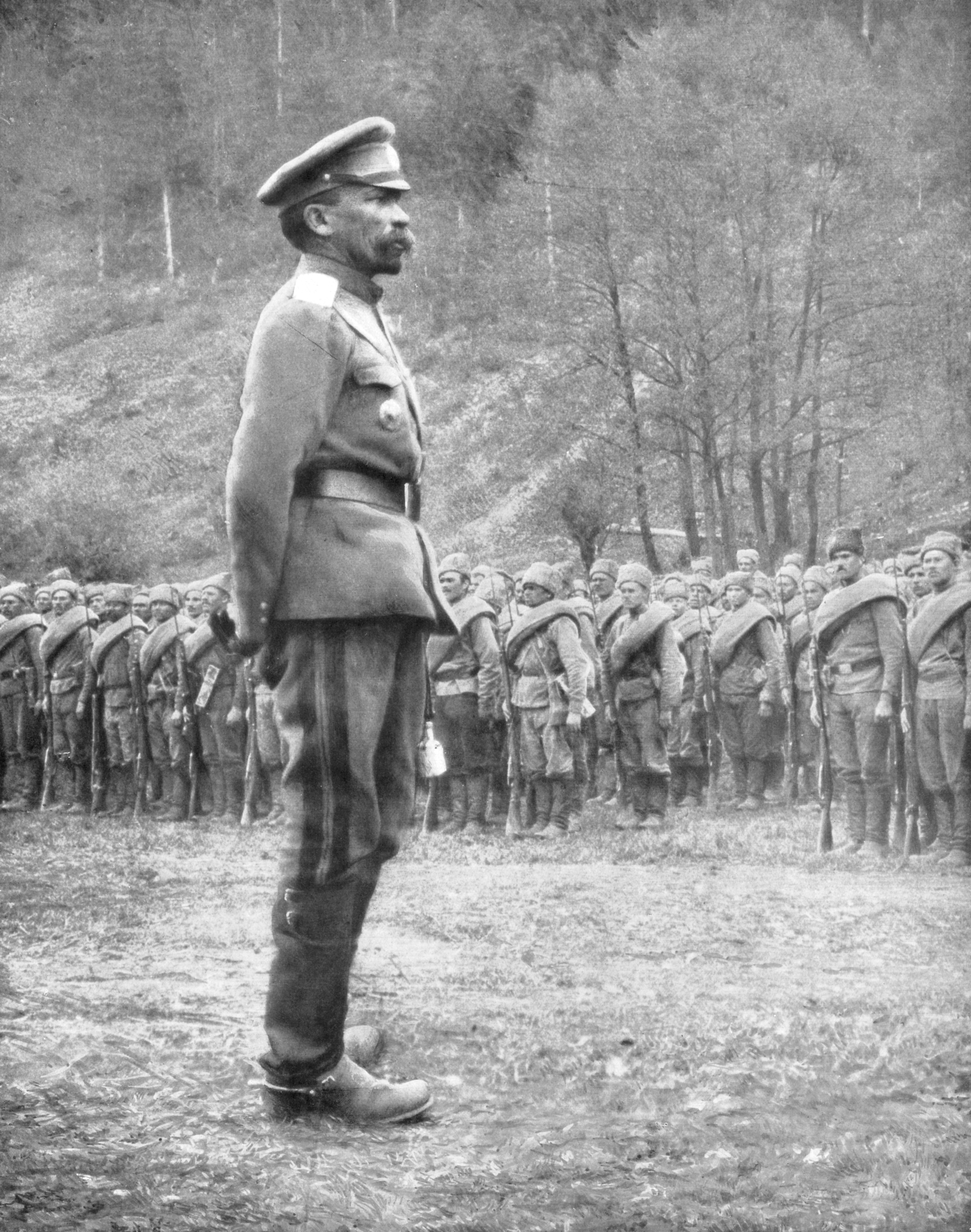
General Lavr Kornilov inspecting Russian troops on July 1, 1917.
Source: The Print Collector via Getty Images
In August, General Lavr Kornilov, the Supreme Commander of the transitional government, attempted to stage a military coup to seize power from the transitional government. The leader of the transitional government, Alexander Kerensky, called on the Soviet to protect the city. The Soviet defense, led by Leon Trotsky, was successful and by the end of August, Kornilov was under arrest. However, the event greatly undermined the legitimacy of the transitional government, and increased support for the Bolsheviks, the revolutionary political party led by Vladimir Lenin.
October 24-26, 1917: The Bolsheviks Seize Power
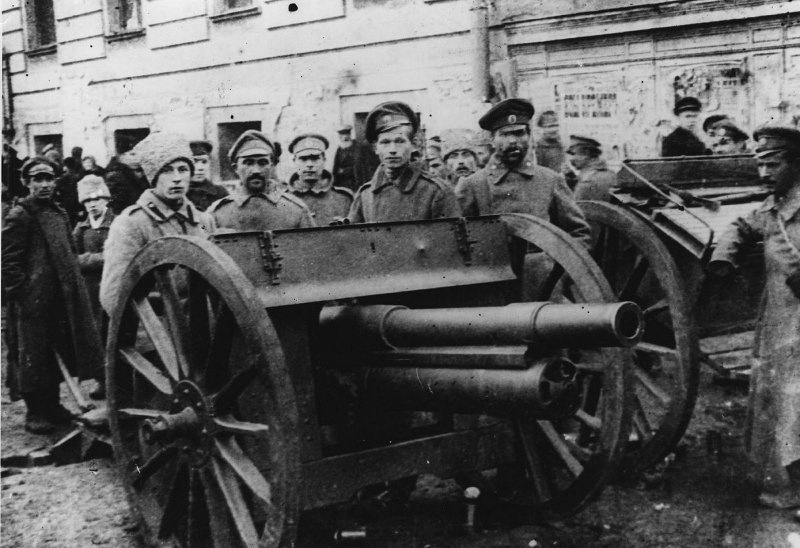
Troops place a cannon near the building of the Moscow Soviet in November 1917.
Source: Multimedia Art Museum, Moscow
On October 24, bolstered by increasing support, the Bolsheviks started to seize control of government buildings, railways stations, and telegraph offices in Petrograd. The following day, the Soviet congress was informed that the Bolsheviks were staging a coup, causing delegates to storm out in protest. Within minutes, the Soviet army stormed the transitional government’s Winter Palace, and power was transferred to the Bolsheviks.
November 12, 1917: Hope for Democracy in Russia Fades
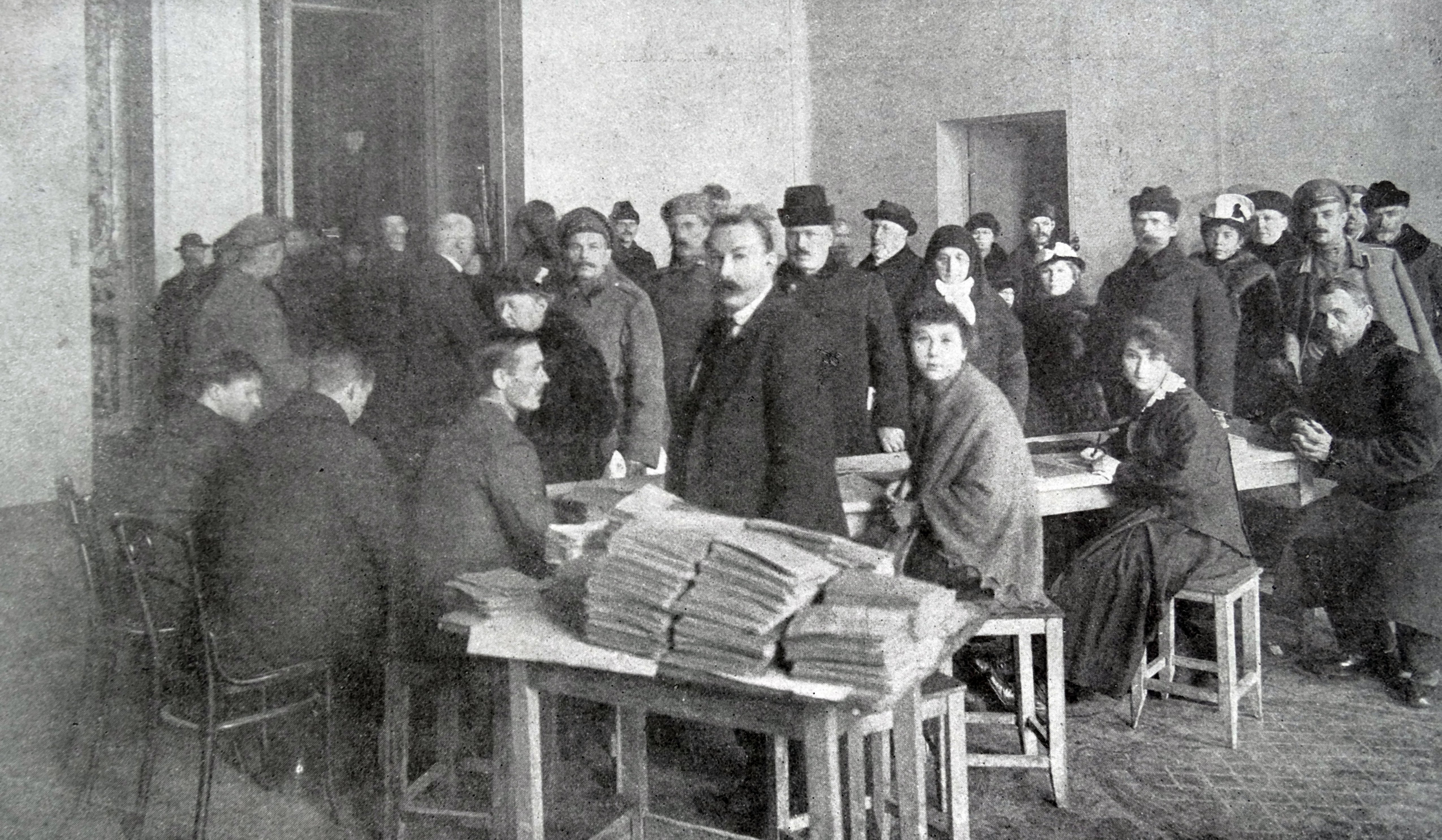
Election polling station in Petrograd during the elections of 1917.
Source: Universal History Archive via Getty Images
The Bolshevik government, led by Lenin, allowed elections to be held for a democratically elected body called the Constituent Assembly. Forty-two million votes were cast, but the Bolsheviks received only twenty four percent of the vote. Following the election, Lenin published a series of nineteen “theses” explaining why the Bolsheviks were not going to honor the election results. Seventy-four years passed before Russia held another election.